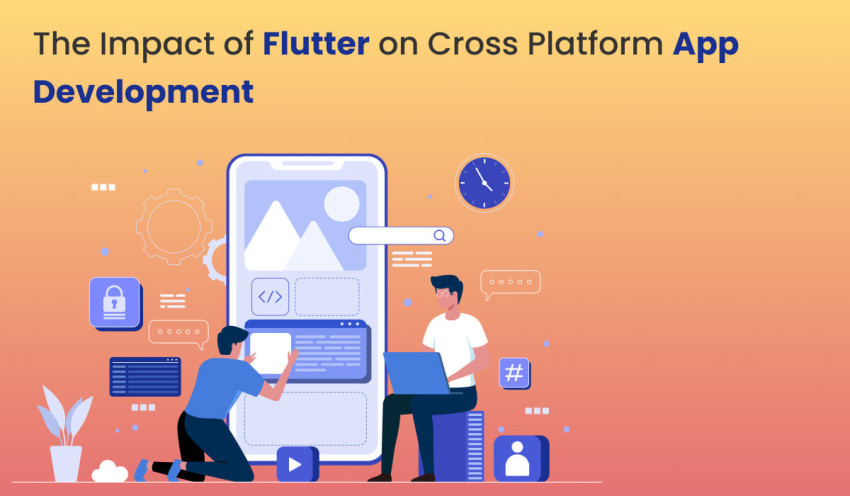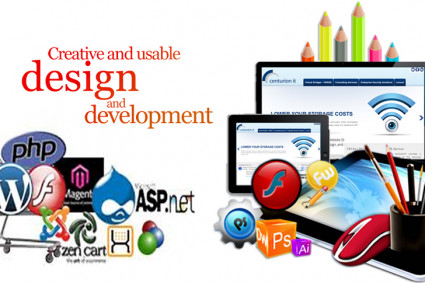
In the realm of mobile app development, cross-platform frameworks have emerged as game-changers, offering developers the ability to build apps for multiple platforms using a single codebase. Among these frameworks, Flutter has gained significant traction for its versatility, performance, and developer-friendly features. Developed by Google, Flutter has rapidly become a preferred choice for building high-quality, native-like mobile applications for both iOS and Android platforms. In this comprehensive guide, we'll explore the impact of Flutter on cross-platform app development, discussing its features, benefits, and implications for developers.
Understanding Flutter:
Flutter is an open-source UI toolkit for building natively compiled applications for mobile, web, and desktop from a single codebase. Introduced by Google in 2018, Flutter has gained popularity among developers for its fast development cycle, expressive UI, and high-performance rendering engine. Flutter uses the Dart programming language, which is compiled ahead of time (AOT) into native machine code, enabling Flutter apps to achieve near-native performance on both iOS and Android platforms.
One of the key features of Flutter is its widget-based architecture, which allows developers to create rich and interactive user interfaces using a comprehensive library of customizable widgets. Flutter widgets are highly composable and customizable, enabling developers to create complex UI layouts and animations with ease. Additionally, Flutter provides a hot reload feature that allows developers to instantly see changes to their code reflected in the app, speeding up the development process and facilitating rapid iteration, suggest a Flutter application developer in Bangalore.
Benefits of Flutter for Cross-Platform App Development:
Flutter offers a multitude of benefits for cross-platform app development, making it an attractive choice for developers and businesses alike. Some key benefits of Flutter include:
Single Codebase: With Flutter, developers can write a single codebase that runs on both iOS and Android platforms, reducing development time and effort. This eliminates the need for separate codebases for each platform, streamlining the development process and making maintenance easier.
Fast Development Cycle: Flutter's hot reload feature enables developers to make changes to their code and see the results instantly, without the need for a full app restart. This speeds up the development cycle and allows for rapid iteration, resulting in faster time-to-market for mobile apps.
Native Performance: Flutter apps are compiled to native machine code using the Dart AOT compiler, resulting in near-native performance on both iOS and Android platforms. This ensures that Flutter apps are fast, responsive, and provide a smooth user experience, without compromising on performance.
Rich and Expressive UI: Flutter's widget-based architecture and extensive library of customizable widgets allow developers to create rich and expressive user interfaces with ease. Developers can leverage pre-built widgets or create custom widgets to design UI layouts and animations that match their app's design language and brand identity.
Consistent Design Across Platforms: Flutter uses a consistent set of UI components called Material Design for Android and Cupertino for iOS, ensuring a consistent look and feel across different platforms. This helps maintain brand consistency and provides a familiar user experience for users regardless of the platform they are using.
Implications for Developers:
The adoption of Flutter has significant implications for developers, shaping the way they approach mobile app development and influencing their skill sets and tooling choices. Some key implications for developers include:
Learning Dart: As Flutter uses the Dart programming language, developers need to familiarize themselves with Dart's syntax, features, and best practices to be productive with Flutter development. While Dart is relatively easy to learn for developers with experience in other programming languages like JavaScript or Java, there may be a learning curve for those new to Dart.
Mastering Flutter Widgets: Flutter's widget-based architecture is central to building UI layouts and interactions in Flutter apps. Developers need to master Flutter widgets and understand how to compose and customize widgets to create the desired user experience. This may require experimentation and practice to become proficient with Flutter's widget system.
Embracing Reactive Programming: Flutter encourages the use of reactive programming patterns like the BLoC (Business Logic Component) pattern or Provider pattern to manage state and handle user interactions in Flutter apps. Developers need to understand reactive programming concepts and learn how to implement them effectively in their Flutter projects to build scalable and maintainable apps.
Integrating Native Code: While Flutter provides a rich set of APIs for building cross-platform apps, there may be cases where developers need to integrate platform-specific functionality or access native device features not supported by Flutter. In such cases, developers can use platform channels to communicate with native code written in Java/Kotlin for Android or Objective-C/Swift for iOS, allowing them to leverage native APIs and libraries in their Flutter apps.
Best Practices for Flutter Development:
To maximize the benefits of Flutter for cross-platform app development, developers should follow best practices and guidelines for building robust, scalable, and maintainable Flutter apps. Some key best practices for Flutter development include:
Modularize Code: Break your Flutter app into smaller, modular components like widgets, services, and data models to promote code reusability, maintainability, and testability. Use a modular architecture pattern like BLoC or Provider to separate business logic from UI components and manage state effectively.
Optimize Performance: Pay attention to performance optimization techniques like minimizing widget rebuilds, reducing unnecessary redraws, and optimizing memory usage to ensure that your Flutter app runs smoothly and efficiently on both iOS and Android platforms. Use Flutter DevTools to profile and analyze your app's performance and identify areas for improvement.
Test Driven Development (TDD): Adopt test-driven development practices to write tests for your Flutter app's business logic, UI components, and integration points. Use Flutter's built-in testing framework, Flutter Test, to write unit tests, widget tests, and integration tests that verify the correctness and behavior of your app's features and functionality.
Embrace Material Design and Cupertino: Leverage Flutter's built-in UI components and design guidelines like Material Design for Android and Cupertino for iOS to create visually appealing and consistent user interfaces. Follow platform-specific design patterns and conventions to ensure that your Flutter app looks and feels native on both platforms.
Stay Updated: Stay informed about the latest updates, features, and best practices in Flutter development by following official documentation, release notes, and community forums. Join online communities like the Flutter subreddit or Flutter Discord channel to connect with other Flutter developers, share knowledge, and seek help with your Flutter projects.
Conclusion:
Flutter has revolutionized cross-platform app development, offering developers a powerful and versatile toolkit for building high-quality, native-like mobile applications for iOS and Android platforms. With its single codebase, fast development cycle, native performance, and expressive UI, Flutter has become a preferred choice for developers looking to create fast, beautiful, and responsive mobile apps.
By embracing Flutter and following best practices for Flutter development, developers can build robust, scalable, and maintainable apps that provide a seamless user experience across different platforms. As Flutter continues to evolve and gain traction in the developer community, it's poised to shape the future of cross-platform app development and empower developers to build innovative and engaging mobile experiences for users around the world.





